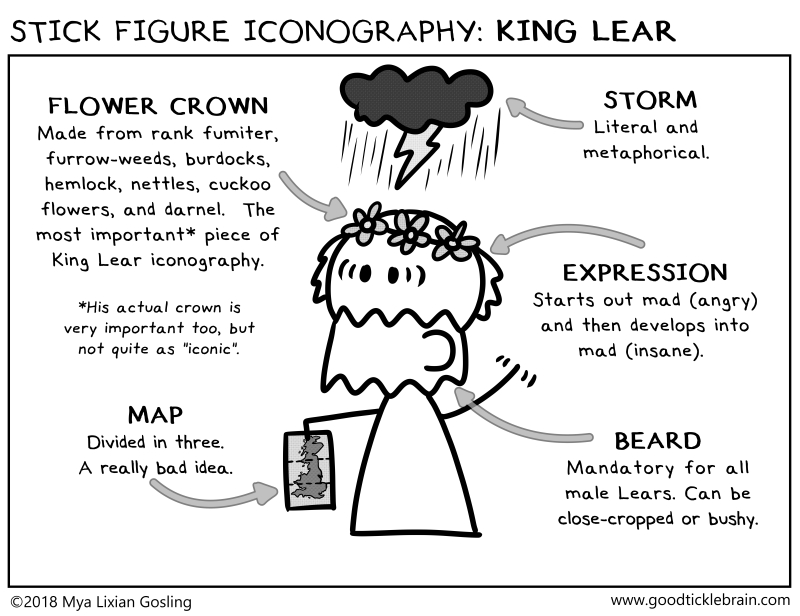A Stick Figure Midsummer Night's Dream: Act 1, Scene 1 (part 1)
HERE WE GO HERE WE GO HERE WE GO
I think we can all agree Egeus is one of the worst fathers in the world. Even Juliet's lousy father was just going to disown her for her disobedience, not put her to death.
Egeus sucks.
A Stick-Figure Midsummer Night's Dream: Dramatis Personae
All right, let's do this!
Stick Figure Iconography: Benedick
Let's end this latest round of Shakespearean Stick Figure Iconography with a look at one of Shakespeare's most lovable rogues: Benedick!
Really, all you need to signify a Benedick is to show someone peeking out from behind an inadequate shrub with a incredulous look on their face.
I'm taking next week off to catch up on stuff, so see you back here on *checks calendar* August 21!
Stick Figure Iconography: Viola
Another one of Shakespeare's heroines is the subject of today's iconography:
It's really difficult to pinpoint an "iconic" Viola look. If you just look at a photo of a Viola, you don't really KNOW it's Viola unless you see her face to face with her supposedly identical twin brother. So, in some ways Sebastian is, perversely, the most important piece of Viola iconography.
Stick Figure Iconography: Othello
Today we take a look at the iconography of Othello, which, frankly, is kind of easy because, let's face it, he is one of only two Shakespearean characters who are explicitly not white.
I think we can all agree that the time of Othellos depicted by white men in blackface has well and truly past.
What we can't agree on, though, is the color of the handkerchief. It's traditionally depicted as white (with all the symbolism that entails) but a relatively recent article argues that it should be black (with all the symbolism that entails), as it is mentioned in the text as being "dyed with mummy".
Stick Figure Iconography: Katherina
Katherina Minola, aka "The Shrew" is the focus of today's iconography comic.
I have to admit, I love the bit where she hits Hortensio with the lute offstage.
Stick Figure Iconography: King Lear
It's everyone's favorite mad monarch in today's installment of Shakespearen Stick Figure Iconographies!
Lear only wears his flower crown for one scene, but it's a doozy of a scene and the image of Lear with his flower crown, cradling the blinded Gloucester, is pretty much THE image from King Lear, rivaled only by Lear yelling at the storm.










